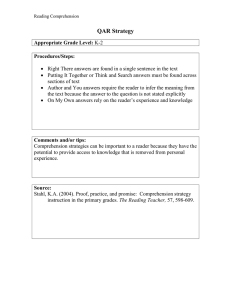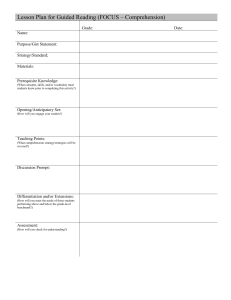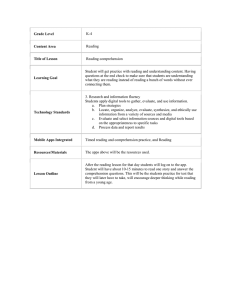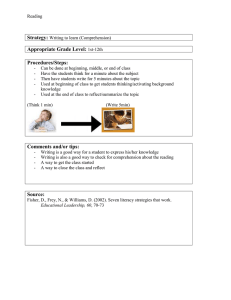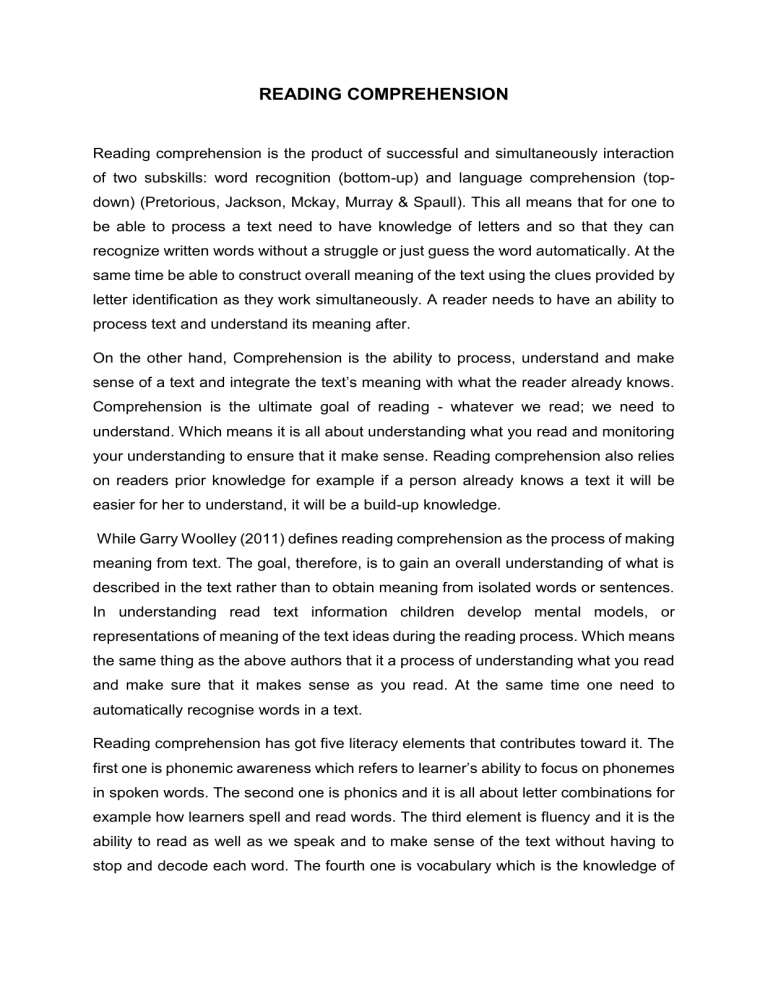
READING COMPREHENSION Reading comprehension is the product of successful and simultaneously interaction of two subskills: word recognition (bottom-up) and language comprehension (topdown) (Pretorious, Jackson, Mckay, Murray & Spaull). This all means that for one to be able to process a text need to have knowledge of letters and so that they can recognize written words without a struggle or just guess the word automatically. At the same time be able to construct overall meaning of the text using the clues provided by letter identification as they work simultaneously. A reader needs to have an ability to process text and understand its meaning after. On the other hand, Comprehension is the ability to process, understand and make sense of a text and integrate the text’s meaning with what the reader already knows. Comprehension is the ultimate goal of reading - whatever we read; we need to understand. Which means it is all about understanding what you read and monitoring your understanding to ensure that it make sense. Reading comprehension also relies on readers prior knowledge for example if a person already knows a text it will be easier for her to understand, it will be a build-up knowledge. While Garry Woolley (2011) defines reading comprehension as the process of making meaning from text. The goal, therefore, is to gain an overall understanding of what is described in the text rather than to obtain meaning from isolated words or sentences. In understanding read text information children develop mental models, or representations of meaning of the text ideas during the reading process. Which means the same thing as the above authors that it a process of understanding what you read and make sure that it makes sense as you read. At the same time one need to automatically recognise words in a text. Reading comprehension has got five literacy elements that contributes toward it. The first one is phonemic awareness which refers to learner’s ability to focus on phonemes in spoken words. The second one is phonics and it is all about letter combinations for example how learners spell and read words. The third element is fluency and it is the ability to read as well as we speak and to make sense of the text without having to stop and decode each word. The fourth one is vocabulary which is the knowledge of words that a person has. The last element is spelling which is the process of naming or writing letters of words.

